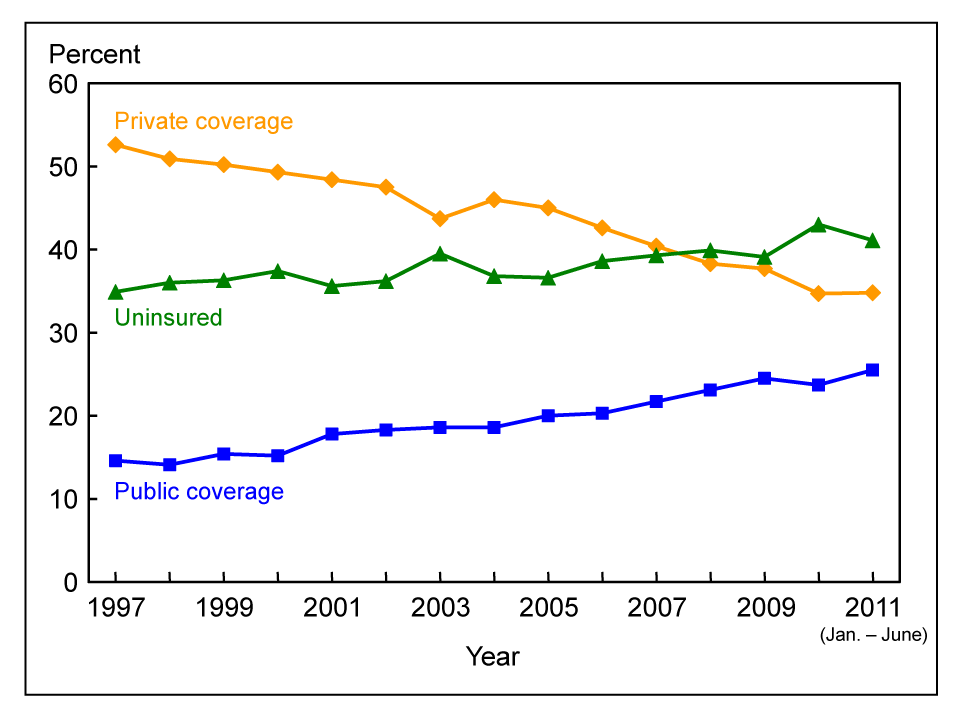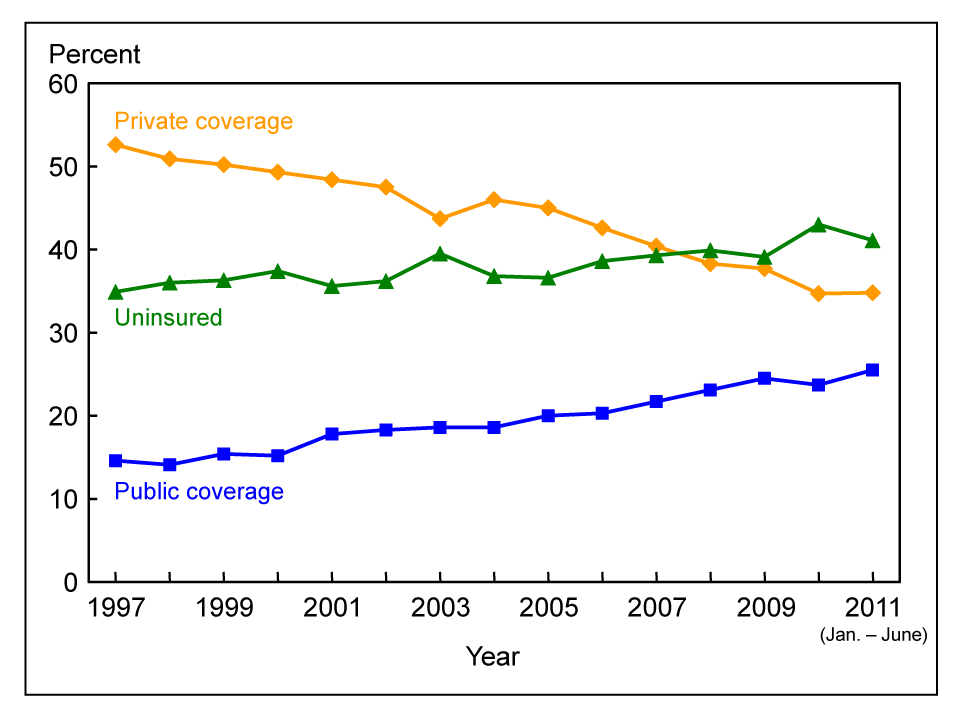Private Health Insurance Coverage Bounces Back in Right to Work States

Health Insurance Coverage Status and Type of Coverage

Nationally, the number of people covered by employment-based private health insurance grew by roughly 730,000 in 2011 after years of decline. But in Right to Work states alone, the increase was 1.69 million. Meanwhile, private, job-based health insurance coverage declined by almost a million in forced-unionism states last year (Chart: CDC/NCHS).
Big Labor’s allies sometimes concede that states with Right to Work laws, which bar the firing of employees for refusal to pay union dues or fees to their “exclusive” (monopoly) union bargaining agents, enjoy accelerated job creation. Whenever they do, they insist the jobs created are “the wrong kind.” (See the first link above for a very recent example of this type of anti-Right to Work opinion-slinging.)
But the fact is, it is in the non-Right to Work states as a group where new jobs are more typically not productive enough to come with important benefits like health insurance.
Runaway costs associated with Medicare and Medicaid, the two largest taxpayer-funded health-insurance programs, are helping to bust the federal budget and put many state governments in the red. The so-called “Affordable Care Act” of 2010, otherwise known as ObamaCare, was sold in part on the theory that it would help stop Medicare and Medicaid costs from spiraling out of control, but this promise seems extraordinarily unlikely to be fulfilled.
The fact is, the accelerated creation of good jobs that are sufficiently productive to absorb the high cost of family health-care benefits remains a key component for resolving the Medicare and Medicaid crises. Sadly, millions and millions of such jobs were destroyed throughout the country during the Great Recession of 2007-2009.
Last year, however, despite the tepid national recovery, private health insurance bounced back vigorously in many, though far from all, states. In 2o11, Right to Work states as a group, then 22 in number, enjoyed a net increase of 1.69 million, or 2.6%, in the number of people covered by private, employment-based health insurance. Meanwhile, the 28 states that do not protect workers from federally-imposed compulsory unionism suffered a net decline of roughly 970,000 in the number of people covered by private, job-based insurance. (See the second link above for more information. Indiana, which became the 23rd Right to Work state this year, is counted as a forced-unionism state in the calculations above.)
Right to Work states’ superiority in creating jobs that come with health-insurance benefits is no mere one-year anomaly. Over the past decade for which data are available (2001-2011), despite the enormous setback of the Great Recession, Right to Work states as a group (again excluding Indiana) added roughly 960,000 people, net, to the ranks of the privately insured, whereas forced-unionism states saw their ranks of privately insured people shrink by 7.71 million people. (The data cited here, unlike those above, include people who buy their own private insurance as well as those who receive private insurance through their employers.)
Had private insurance coverage increased in forced-unionism states as much as it did in Right to Work states over the past decade, there would have been roughly 9.2 million more people with private insurance nationwide in 2011 than the actual figure of 197.3 million.

